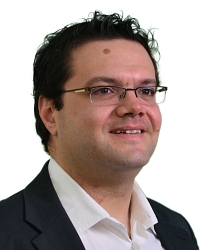TR2011-009
Sparse Recovery from Combined Fusion Frame Measurements
-
- , "Sparse Recovery from Combined Fusion Frame Measurements", IEEE Transactions on Information Theory, DOI: 10.1109/TIT.2011.241.3890, Vol. 57, No. 6, pp. 3864-3876, May 2011.BibTeX TR2011-009 PDF
- @article{Boufounos2011may3,
- author = {Boufounos, P.T. and Kutyniok, G. and Rauhut, H.},
- title = {{Sparse Recovery from Combined Fusion Frame Measurements}},
- journal = {IEEE Transactions on Information Theory},
- year = 2011,
- volume = 57,
- number = 6,
- pages = {3864--3876},
- month = may,
- doi = {10.1109/TIT.2011.241.3890},
- url = {https://www.merl.com/publications/TR2011-009}
- }
- , "Sparse Recovery from Combined Fusion Frame Measurements", IEEE Transactions on Information Theory, DOI: 10.1109/TIT.2011.241.3890, Vol. 57, No. 6, pp. 3864-3876, May 2011.
-
MERL Contact:
-
Research Area:
Abstract:
Sparse representations have emerged as a powerful tool in signal and information processing, culminated by the success of new acquisition and processing techniques such as compressed sensing (CS). Fusion frames are very rich new signal representation methods that use collections of subspaces instead of vectors to represent signals. This work combines these exciting fields to introduce a new sparsity model for fusion frames. Signals that are sparse under the new model can be compressively sampled and uniquely reconstructed in ways similar to sparse signals using standard CS. The combination provides a promising new set of mathematical tools and signal models useful in a variety of applications. With the new model, a sparse signal has energy in very few of the subspaces of the fusion frame, although it does not need to be sparse within each of the subspaces it occupies. This sparsity model is captured using a mixed l1/l2 norm for fusion frames. A signal sparse in a fusion frame can be sampled using very few random projections and exactly reconstructed using a convex optimization that minimizes this mixed l1/l2 norm. The provided sampling conditions generalize coherence and RIP conditions used in standard CS theory. It is demonstrated that they are sufficient to guarantee sparse recovery of any signal sparse in our model. More over, a probabilistic analysis is provided using a stochastic model on the sparse signal that shows that under very mild conditions the probability of recovery failure decays exponentially with in creasing dimension of the subspaces.
Related News & Events
-
NEWS IEEE Transactions on Information Theory: publication by Petros T. Boufounos and others Date: May 23, 2011
Where: IEEE Transactions on Information Theory
MERL Contact: Petros T. Boufounos
Research Area: Computational SensingBrief- The article "Sparse Recovery from Combined Fusion Frame Measurements" by Boufounos, P.T., Kutyniok, G. and Rauhut, H. was published in IEEE Transactions on Information Theory.
